
8th Cancer Cachexia Conference
September 25-27, 2025 | Turin, Italy
Torino, Italy
Torino (Turin, in English) is a major business and cultural center in northern Italy. It is the capital city of Piedmont and was the first Italian capital from 1861 to 1865. The city was originally built on the western bank of the Po River, below the Susa Valley, and is surrounded by the western Alpine arch and the Superga hill.
How to get to Torino by air
Torino-Caselle (TRN) Airport
Please note TRN is the code for the Torino-Caselle Airport (IATA: TRN; ICAO: LIMF), which is the main international airport serving the city of Torino (16 km or 9.9 mi northwest of the city).
TRN is connected to all major European hubs (including Paris-CDG, Amsterdam-AMS, Frankfurt-FRA, Munich-MUC, Madrid-MAD and Rome-FCO) and allows for easy connections with the rest of the world. The Conference Hotel(s) are approximately 25 minutes away by car, or 55 minutes by train.
Train from the airportTrenitalia connects the Torino airport to the Torino Porta Susa station via the sfm4 and sfm7 lines. The journey takes approximately 30 min. The “Torino-Aeroporto di Caselle” train station is directly connected to the airport terminal on the Arrivals level. One-way tickets are €3.70 per person. There are ticket machines at the station. Don’t forget to validate your ticket before boarding the train at the “stamp” machines on the train platform. Alternatively, you can easily purchase your ticket on your phone using the Trenitalia app. On arrival at Turin Porta Susa station, you can transfer to the Metro, taking it in the direction of Lingotto and getting off at Porta Nuova. You can purchase a ticket (EUR 1.90) at the vending machines located at the entrance of the subway, or by tapping your credit card at the dedicated entry gates, or on your phone by using the GTT ToMove app. From Porta Nuova it is an easy 0.5 miles/0.8 km walk to Hotel Victoria.
Bus from the airportThe airport is also connected to the city center via bus service (Arriva Italia). The service runs every day of the year with trips every 15'/30'. A one-way ticket is EUR 7.50 The bus will stop at Torino Porta Susa and Torino Porta Nuova train stations, with final stop in Piazza Carlo Felice, 39. The journey takes 45/50 minutes, depending on traffic conditions. Tickets can be purchased at the ticket machine in the Arrivals Area, online or on board.
Milano-Malpensa (MXP) Airport
The Milano Malpensa (MXP) airport is the largest airport in northern Italy, serving several direct intercontinental destinations across the globe. It is located 140 km or 85 miles north-east of Torino and is connected to the city via car (1h40 min, depending on traffic conditions), bus (2 hours) and train (up to 2h30, depending on the train type, with connection in Milano Centrale or Milano Porta Garibaldi).
Bus service to Torino
The most convenient and fastest solution is the direct bus to Torino city center (Arriva Italia). Single fares are EUR 22. The bus leaves from MXP Terminal 1 (in front of Door #3, Stop #4) and 2 (Stop #4) and will stop in front of the Torino Porta Susa station (Autostazione Corso Bolzano), from which you can transfer to the Metro, taking it in the direction of Lingotto and getting off at Porta Nuova. The journey takes approximately 2 hours.
Things To Do in Torino
Torino is a wonderful city to discover, and we want you to enjoy the city as well as the Conference. We have put together a few suggestions for you to explore. For a full guide on things to do during your stay in Torino as well as what’s happening in the city during the Conference, please click here. To give you just a taste of the countless sightseeing opportunities in Torino, here below you will find a selection of ‘must do’ that you should check out when visiting!
• The Royal Residences: The Royal Residences of Torino and Piemonte have been a UNESCO World Heritage Site since 1997. Taken together, they offer an extraordinary fresco of the history of Piemonte and Italia, with particular reference to the events that led up to national unity: a unique cultural, historical, architectural and environmental circuit, accessible and open to visitors, with an exceptional universal value. Architectural jewels that embody the elegance and relevance of Torino's imprint as a royal city, they are located partly in the city, others in the province. In Torino you can visit: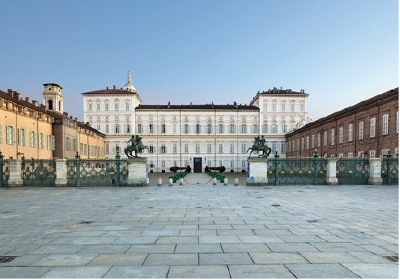
Musei Reali (Palazzo Reale, Biblioteca Reale, Armeria Reale, Giardini Reali, Palazzo Chiablese): Overlooking Piazza Castello, the Royal Palace, the Savoy Gallery, the Royal Armory, the Royal Library and the Archaeological Museum, the Chapel of the Holy Shroud together with Chiablese Halls (the residence of Pauline Bonaparte and birthplace of Queen Margaret of Savoy, the first Queen of Italy) together constitute the Royal Museums of Torino, a project which underlines the central focus of the city and its artistic heritage within the international panorama: around 3 km of an extraordinary itinerary to re-experience the city’s evolution, from the first Roman settlement to the Unification of Italy.
Castello del Valentino: In the green heart of the 19th century park of Torino, the Castle of Valentino had various uses over the centuries before being taken over by the Faculty of Architecture of Torino Polytechnic. In the 1500s it was a riverside residence located out of town, and its period of maximum splendor was under Christine of France, the first regent in the Savoy State, who chose it to be the palace of entertainment, extending it according to French tastes and promoting the rich decoration of the rooms on the piano nobile. After her death, the parties that the Madame Royale enjoyed organizing were no more, and just a few decades later one of the side gardens was turned into the Botanical Gardens for the University, which can still be visited. During the 19th century, the castle was radically altered due to the Exposition of 1858 initiated by Cavour.
Palazzo Carignano: One of the most original baroque buildings, is characterized by the curved terracotta façade and the atrium with the double staircases. Commissioned in 1678 by Emanuele Filiberto di Savoia Carignano to Guarino Guarini, the latter drew his inspiration from Bernini’s drawings for the Louvre. In the 19th century a second block was added to house the Italian Parliament, with a new frontage facing the current Piazza Carlo Alberto. Palazzo Carignano is therefore a symbolic place of the history of the Savoy dynasty and of the Italian “Risorgimento”: Carlo Alberto and Vittorio Emanuele II were both born here, and it was the seat of the Subalpine Parliament and of the first Italian Parliament. Since 1938, the first floor has housed the National Museum of the Risorgimento and the visit of the rooms of the Appartamenti dei Principi (Princes’ Apartments) is possible since 2011.
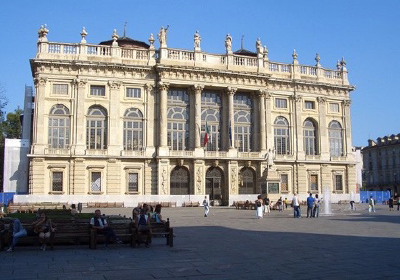
Palazzo Madama: A visit to the Madama Palace is a way of travelling through time: from its Roman foundations to the medieval towers and on to the sumptuous baroque of the staircase by Juvarra. The palazzo has its origins in a Roman castrum (military defence complex), but the name of the building refers to the Madame Royale title for both Marie-Christine of France and Marie Jeanne Baptiste of Savoy-Nemours who were the driving force behind the modernization project that culminated in the construction of the grand staircase and the elegant facade by Filippo Juvarra. In the 19th century, Court life was replaced by politics: Charles Albert based the first Royal Senate here and it was from here that the birth of the Kingdom of Italy was declared. Since 1934 it has been the Municipal Museum of Ancient Art.
Villa della Regina: After careful restoration, the Villa of the Queen has been reopened to the public. Acting as a dramatic backdrop to the city, it is in the center of Italianate gardens with pavilions, fountains and agricultural areas once again in production. Begun as the royal hillside vineyard of cardinal Maurice and the princess Ludovica, it was the delicious residence of duchesses, princesses and queens of the House of Savoy up until the 19th century. The courtly residence, with Royal Apartments leading off from the superb main room, reflects in the decorations and furnishings the fashionable taste for precious arts and exoticism that prevailed in European courts in the 18th century.
• Museo Egizio: The Museo Egizio is the world’s oldest museum devoted entirely to ancient Egyptian culture. It is also the largest collection of Egyptian arts outside of Egypt. It is one of the most visited museums in Italy, with almost 1 million visitors every year.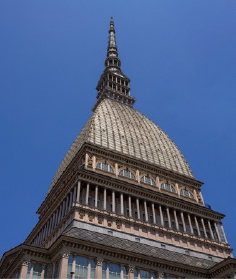
• Museo Nazionale del Cinema: The National Museum of Cinema is a motion picture museum fitted out inside the Mole Antonelliana tower, which represents the symbol of Torino. It is amongst the most visited Italian museums, with over half a million visitors every year. Inside the museum there is also a panoramic elevator with transparent glass walls, that cover its 75 meters ride in 59 seconds, in the single open space span of the building, without middle floors, up to the "small temple" which gives a 360 degrees panoramic view of the city. It is the museum with the biggest vertical extension in the world.
• Museo Nazionale dell’Automobile: It is an automobile museum opened in 1960. The museum has a collection of almost 200 cars among eighty automobile brands representing eight countries (Italy, France, Great Britain, Germany, Netherlands, Spain, United States of America, Poland).
• Quadrilatero Romano: The lively district of Quadrilatero features densely packed streets lined with sidewalk cafes, cozy bars, relaxed eateries, and shops, especially along Piazza Palazzo di Città and the pedestrian-only Via Garibaldi. It borders the Royal Palace of Turin, and is also home to the Museum of Eastern Art, housed in a 17th-century palace, and the Palatine Towers city gate leading into the Palatine Towers Archaeological Park.
• Piazzas and Porticoes: Torino is home to several notable and elegant squares, as well as 18km of porticoes (arcades)!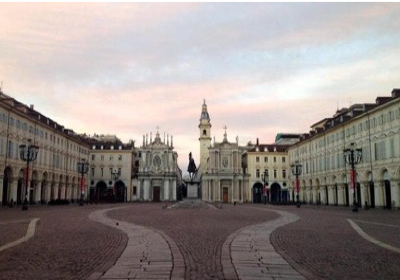
Piazza San Carlo: A Baroque square with porticos designed by Carlo di Castellamonte. It's surrounded by two churches, the Equestrian monument of Emmanuel Philibert, and historic cafes.
Piazza Castello: A large square with a castle, medieval compound, and ancient Roman entrance to the city. It's surrounded by elegant buildings and includes the Royal Palace and several museums.
Piazza Vittorio Veneto: A large square bordered by the Po River and the Grand Madre church.
Piazza Carignano: A beautiful piazza with an antique pharmacy that's now an elegant eatery. It has outdoor seating and great views.
Piazza Carlo Alberto: A pedestrian square with a large monument of the former Savoy king of Sardinia. It's flanked by Palazzo Carignano and the National Library building.
• Valentino Park: This is one of the oldest parks in Turin, along the banks of the river Po, where you can enjoy the fresh air, a stroll outdoors or cycle far from the bustle of the city. The park boasts a remarkable floral and arboreal heritage, with about 1,800 tall trees, and a wealth of bird life with many species of local birds that are well adapted to the river habitat, including herons and mallards. Inside the green you can also find the Medieval Village created to enhance and promote the ancient historical and cultural traditions of Piedmont during the Italian General Exposition of 1884, as well as the houses, streets and statues including those dedicated to Massimo D'Azeglio and Cesare Battisti, fountains such as the Fontana dei Dodici Mesi (Fountain of the twelve months) with a large Rococo-style fountain pool, and the characteristic Rock Garden with its paved streets, streams and water features.
• Monte dei Cappuccini: The Monte dei Cappuccini is a small hill 325 meters high (1,066 ft) overlooking the River Po just south of the bridge of Piazza Vittorio Veneto. This hill had been used since antiquity for defensive purposes as it overlooked one of the established crossing points of the Po. Nowadays, it is one of the most beautiful scenic viewpoints in the city.
DISCOVER TORINO AND ITS METROPOLITAN AREA
• Basilica di Superga: This church, built on the top of the hill of Superga, is considered late Baroque-Classicism. The dome was completed in 1726 and resembles some elements of Michelangelo's dome at St. Peter's Basilica. The Royal Crypt of Superga is the burial place of the Savoy family.
• Sacra di San Michele: The Sacra di San Michele is a religious complex situated on the south side of the Val di Susa. The abbey is the "Symbolic monument of Piedmont ". This monumental abbey served as one of the inspirations for the book ‘The Name of the Rose’ by Umberto Eco.
• Langhe, Monferrato e Roero: this is the wine district of Piedmont. Some of the finest Italian wines, including Barolo, Barbaresco, are produced here.
• Reggia di Venaria Reale: this palace is often referred to as the 'Versailles' of the Savoia family, renowned for its Baroque architecture and extensive gardens.
• Palazzina di Caccia di Stupinigi: this palace was designed by architect Filippo Juvarra and is renowned for its artistic beauty.
• Castello di Rivoli: originally a military stronghold, today it houses the Museum of Contemporary Art.
• Castello di Racconigi: this castle has a history stretching back thousands of years, and is a former holiday residence for the Savoia family.
• La Mandria: this park is and ancient hunting (and love) residence.
DISCOVER THE HEART OF ITALIAN CUISINE
Turin isn't just the birthplace of Italian cinema and aperitivo — it's also a gastronomic gem. From rich tajarin pasta to indulgent gianduja chocolate and elegant Barolo wines, Piedmont’s capital offers a refined and authentic culinary experience.
Click here to explore Turin’s best culinary traditions
CHILD CARE
Looking for childcare options in Turin? We know how important it is to find a safe, nurturing, and engaging environment for your little ones. To help you in your search, we've compiled some helpful resources and directories.
FUN FACTS ABOUT TORINO
Did you know that…
- Torino was the first capital of Italy from 1861 to 1865.
- FIAT, the most popular Italian automobile brand, stands for ‘Fabbrica Italiana Automobili Torino’ (Italian Automobiles Factory Turin).
- The first EATALY store opened in Torino in 2007.
- The Mole Antonelliana is the highest museum in the world and was the highest brick- made building in the world at time of construction.
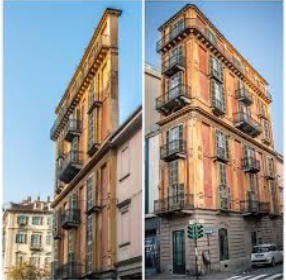
- Porta Palazzo is the largest open-air market in Europe.
- Piazza Vittorio is considered the largest square in Europe.
- The Casa Scaccabarozzi (aka Fetta di Polenta) is an eccentric building believed to be the thinnest one in the world.Torino is one of the capitals of esoteric and magic culture and is part of the ‘Magic Triangle,’ along with Lyon and Prague.
- The Mirafiori FIAT factory was once the largest factory in Europe.
- RAI, the Italian TV and radio broadcast was born in Torino in 1954.
- The Egyptian Museum is the largest collection of Egyptian art outside of Egypt.
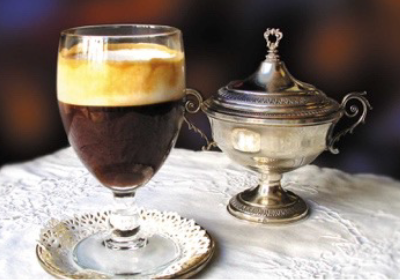
- The Caffe al Bicerin is one of the oldest coffee places in the world, as it opened in 1763!
- Torino is home to world famous Lavazza coffee.
- The Torino Jazz Festival attracts world-class jazz musicians and enthusiasts from all over.
- A representation of the Mole Antonelliana is featured on the obverse of the Italian 2-eurocent coin.
- While walking through Turin’s city center, you might find yourself in front of a building with a piercing going right through its corner.
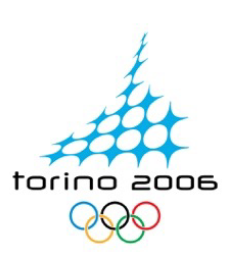
- In 2006, Torino was the host city of the XX Winter Olympic Games.
- Every winter, since 1998, Torino hosts “Luci d’Artista”, an artistic-cultural event during which the city is illuminated by real works of art conceived by contemporary artists.
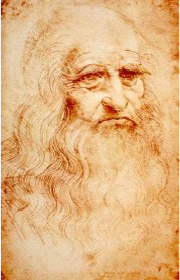
- In Torino you can find over 40 museums.
- Torino is considered the capital of taste, chocolate and aperitifs.
- Torino is the city that houses Leonardo da Vinci’s self-portrait.
|